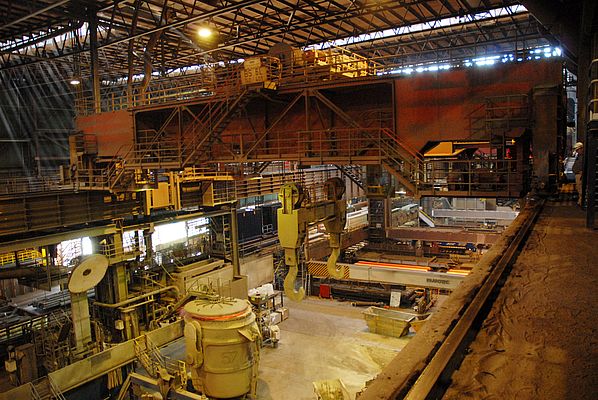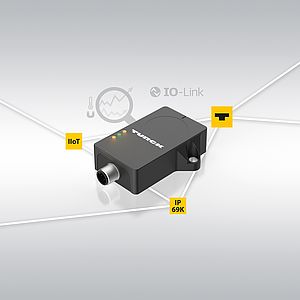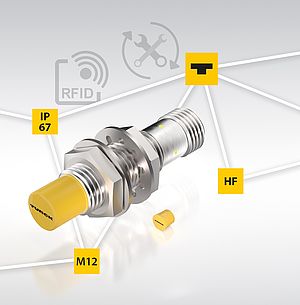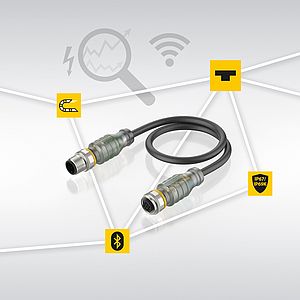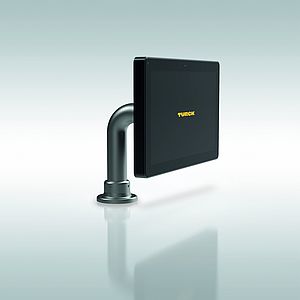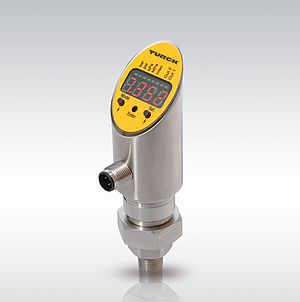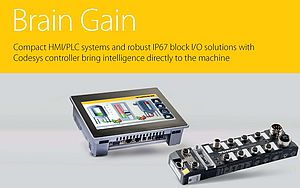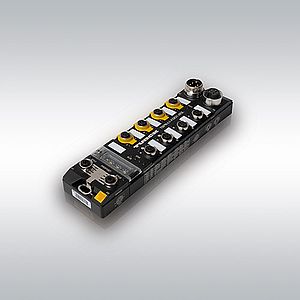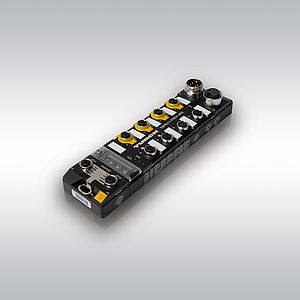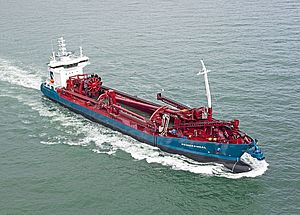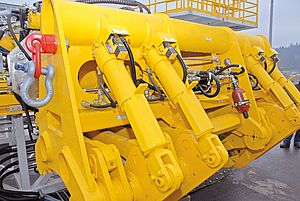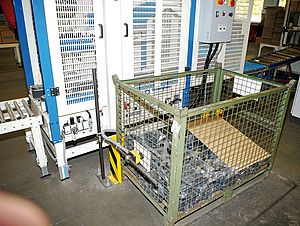It is hot at the iron and steel works company Hüttenwerke Krupp Mannesmann (HKM) in Duisburg, Germany. As one of the leading steel manufacturers in Europe, HKM delivers so-called preliminary products used in steel processing, so-called slabs or billets (round steel bars), to its partners, such as Thyssen Krupp Steel AG. In order to manufacture these, continuously glowing hot, melted metal must be transported, mixed, and processed. The raw materials required for steel production are transported in tough steel tubs, what are called pig iron ladles, through the huge warehouse and production halls. Depending on the ladle, between 90 and 425 tons have to be moved in the process - a task that can only be performed by a giant crane.
Overall, HKM has about 50 giant cranes in use. Alone for the transport of liquid materials, ten huge ladle transport cranes raise their loads high above the hall floors. If, under the rough and dusty conditions on the threshold of steel formation, the proverbial something goes wrong, in the best case scenario, it's only a lot of lost time; in the worst case scenario, it is damages caused by the hot liquid material or the bulky raw iron ladles and the related costs.
Calibrating using RFID
For about a year, the steel producers at HKM have therefore relied on the high temperature solutions from Turck. With the BL ident RFID system and special sensors with an expanded temperature range up to 100 ˚C, the hot ladles can be transported within the production halls precisely to the centimeter and tracked so that expensive errors during transport or when filling with raw material can be avoided. “According to the motto, "install and forget", the Turck products were easy to install, integrated wonderfully into the existing S7 controller and have been operating error free so far,” says Wilhelm Leurs, technician in the crane maintenance department at HKM.
Turck's BL ident RFID solution meets an important control function on the BS6L crane, which transports the emptied ladles to the filling area where they are cleaned and then reheated, if required, in order to be able to hold liquid raw material again. About 16 meters above the floor, sitting in a small cockpit, the crane operator controls his machine with the help of his monitor. There are no longer any positioners on the ground, the crane's movements and positions are visualized and displayed on the monitor. Visualization helps the crane operator position the crane when picking up and setting down loads, which requires a high level of precision from the system.
Rotary position transducer prone to slack
In order to move the crane in a controlled manner over the approximately 400 meter-long distance between the pick-up and filling location, a rotary position transducer is installed on a rotor disk which records the movements of the crane and forwards them to the main control unit. This approach is not without its problems because the travel sensors detect the position of the crane only from the actual rotation of its huge rotor disks. And because the steel wheels of the crane run on steel rails, a certain amount of slack cannot be ruled out. This results in an inaccuracy that the travel sensors cannot compensate for.
The "missing" centimeters can lead to serious errors at the pick-up and drop-off areas at the latest, but make it impossible for the crane operator, who is dependent on the visualization on his monitor, to accurately pick up or set down the ladles. This is where the BL ident RFID system comes in. A Q80 read-write head is mounted near a crane rotor disk and records the signals of the transponder mounted at specific points on the rails, thus allowing millimeter-precise location coordination with the travel sensors in the main control unit - regardless of slack. Using the known positions of the data carrier, the control unit can calibrate the signal of the rotary position transducer and therefore reliably prevent any influence on possible slack. The data carriers are especially designed for use in high temperature environments up to 210 °C.
HKM has therefore selected a control system with low installation and maintenance costs that always checks the signals of the travel sensor and, if necessary, can update them in the control unit. The BL ident system from Turck not only prevents serious accidents, but also makes efficient supply chain management possible in the first place. “In the spirit of complete material monitoring, it is important for us, in the end, to know precisely where the crane puts its load down so that we can determine where each of the individually numbered ladles are located,” says Leurs in explaining the RFID monitoring.
The system works so reliably that the HKM is planning on equipping all of its giant cranes that are used to transport raw and end products with the BL ident solution from Turck. This amounts to 30 giant cranes that guarantee the reliable transport of material in the company's steel production halls in Duisburg, Germany. “Even if we do not completely take advantage of the comfort of the BL ident system, this solution is unbeatable for our control purposes,” summarizes Leurs.
Sensors instead of positioners
In addition to the RFID solution, Turck's inductive sensors have also proven reliable for use in this rough iron and steel works environment. Two special sensors that meet the IP68 protection class are mounted on each of the massive lifting hooks, which the crane uses to lift and transport the foundry ladles, weighing several tons. These sensors record whether the lifting bolts on the foundry ladles lie exactly and safely in the laminated hooks. Here, too, from his cockpit 18 meters above the floor, the crane operator has difficulty detecting without positioners, whether the ladle is correctly placed on the hook. Firstly, the use of two sensors placed at a 90° angle guarantees that the bolts are reliably placed across the entire surface of the laminated hooks.
For Wilhelm Leurs, the heat, shock, and vibration-resistant S 100 sensors from the BI15-K series turned out to be essential and reliable control tools. “We have never had problems with the Turck sensors and will therefore equip all cranes that transport liquid raw materials with these sensors.” Especially due to their high measured switching distances of up to 15 millimeters, the Turck special sensors are suitable for use under the tough conditions in steel production where slag and fine metal dust get into the robust machines and can hinder or distort sensor readings.


